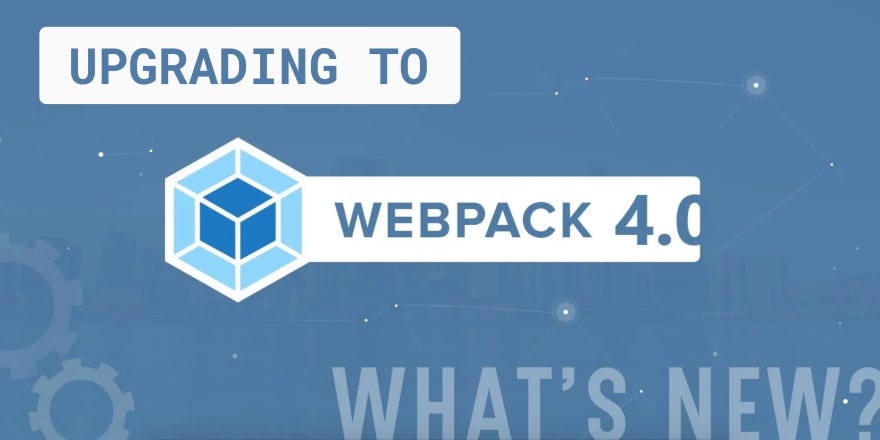Latest news about Bitcoin and all cryptocurrencies. Your daily crypto news habit.

Webpack 4 (codename Legato) was released two weeks back. And it is packed with a lot of shiny features. Unlike Webpack 3, which was not a major upgrade over its predecessor, Webpack 4 has a string of compelling features.
Major changes to look out for -
1. Reduced Build Time The build time has gone down massively (more than 60%)
2. Zero configuration You can now start using webpack with any project without any config file (introducing mode)
I recently upgraded my React-Redux Boilerplate to Webpack 4. There are no clear docs out there for migration yet, so it took me quite some time and struggle to complete the upgrade. I am writing down everything I figured so it can help anyone who wants to upgrade.
The following are the config changes that need to be done.
- Mode
- Plugins
- Dependencies
Mode
Webpack 4 has two modes — development and production.
Previously we passed the flag -p to the webpack command to run a production build. With Webpack 4, you should always pass in mode option. You have two ways to pass in mode,
1. Pass through npm script
In your package.json -
"build": "webpack --config config/webpack.dev.config.js --mode development" "build:prod": "webpack --config config/webpack.prod.config.js --mode production"
2. Pass through config file
In your webpack.dev.config.js
mode: 'development'
In your webpack.prod.config.js
mode: 'production'
Plugins
The following plugins have been removed from Webpack 4 which were extensively used in previous versions.
- NoEmitOnErrorsPlugin
- ModuleConcatenationPlugin
- NamedModulesPlugin
- CommonsChunkPlugin
Now instead, the configuration of these plugins should go inside the key optimization in the config file with their corresponding options.
This snippet might give you more info
plugins: [
// Not used like this anymore
new webpack.NamedModulesPlugin(), new webpack.NoEmitOnErrorsPlugin(), new webpack.optimize.CommonsChunkPlugin({ name: 'vendor', children: true, minChunks: 2, async: true, }), new webpack.optimize.ModuleConcatenationPlugin()],
Instead, the above plugins are used like this
optimization: { namedModules: true, // NamedModulesPlugin()splitChunks: { // CommonsChunkPlugin() name: 'vendor', minChunks: 2 },noEmitOnErrors: true, // NoEmitOnErrorsPlugin
concatenateModules: true //ModuleConcatenationPlugin}
Dependencies
If you’re using dependencies like webpack-hot-middleware and image-webpack-loader, make sure you upgrade them as well. I ran into a weird issue with webpack-hot-middleware but once I upgraded it to the latest version, it got resolved automatically.
You can refer to this commit in React-Redux Boilerplate for reference.
Webpack 4 is great in so many ways. But the lack of docs for upgrade is a bummer. But then, we’re all amazing problem solvers, so we don’t mind.
If you’re planning to upgrade to Webpack 4, don’t think twice, your dev experience will definitely multifold. God Speed!
Have a nice day! ✨
Originally published at dev.to.
Upgrade to Webpack 4 🎉 was originally published in Hacker Noon on Medium, where people are continuing the conversation by highlighting and responding to this story.
Disclaimer
The views and opinions expressed in this article are solely those of the authors and do not reflect the views of Bitcoin Insider. Every investment and trading move involves risk - this is especially true for cryptocurrencies given their volatility. We strongly advise our readers to conduct their own research when making a decision.
